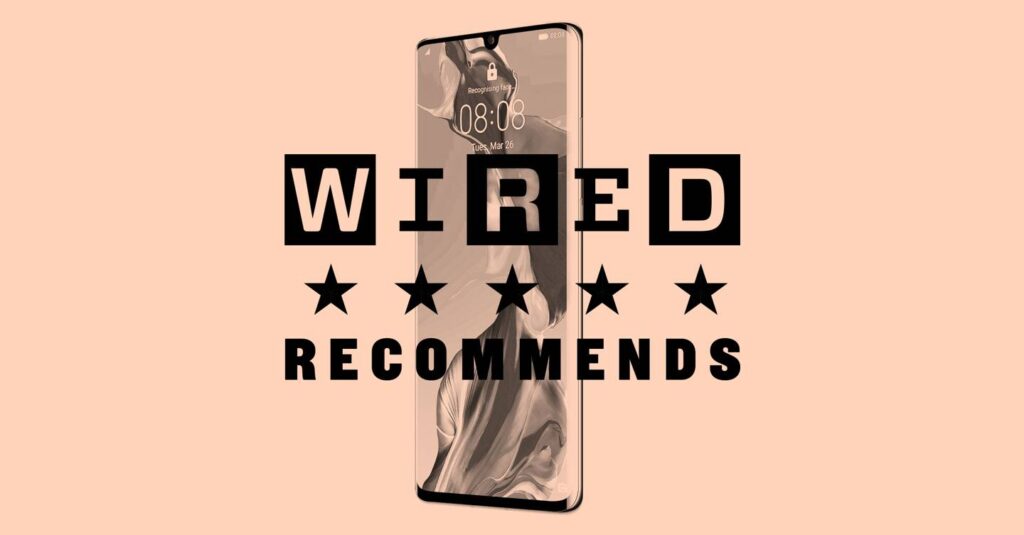
These are the best smartphones for any budget in 2021
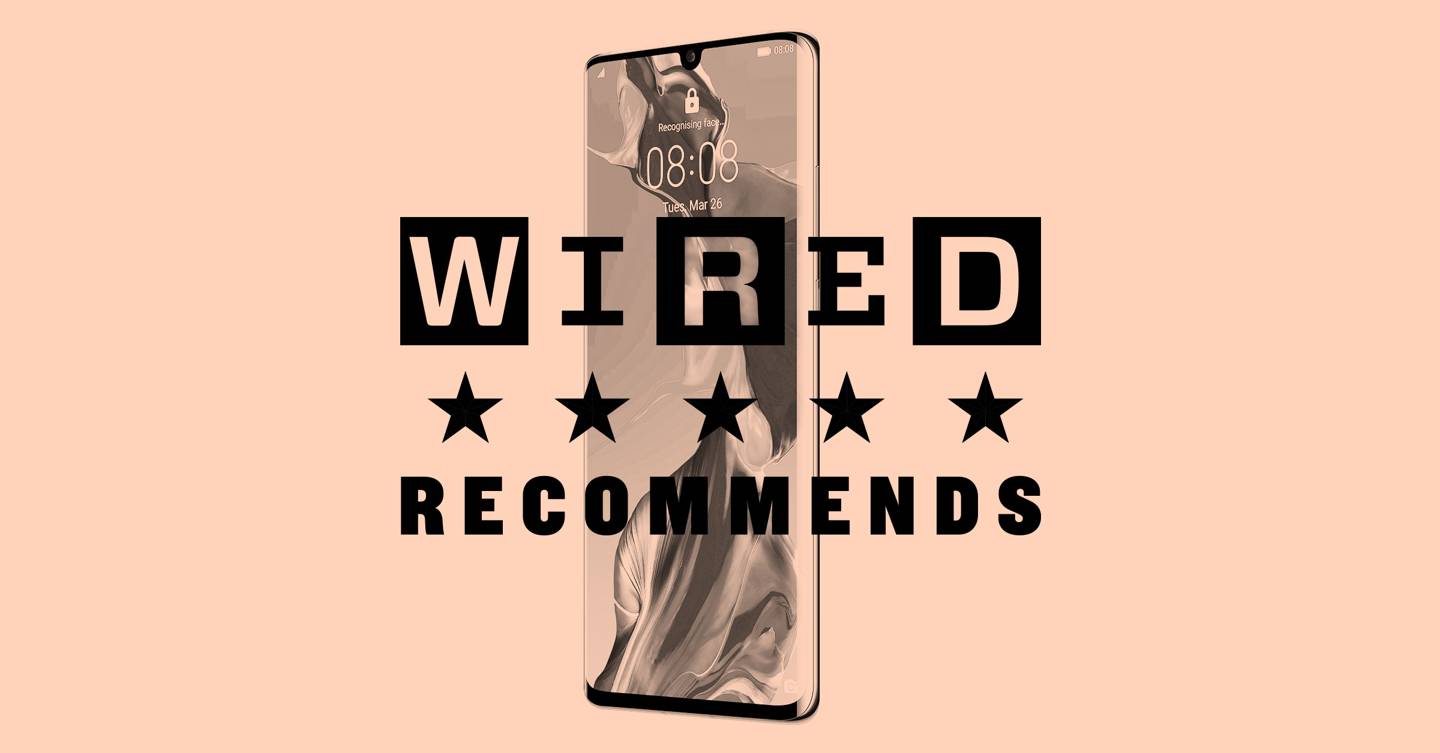
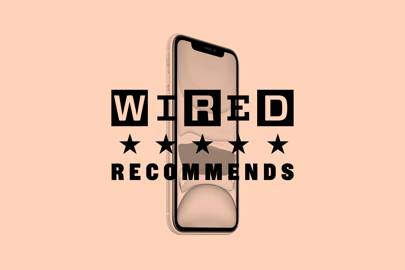

What can you expect from a new phone in 2021? There are three real areas of improvement if you have a good amount of money to spend.
5G is now the standard for higher-end phones, with Apple and, even, budget phones now releasing devices with the tech onboard. The infrastructure has a way to go but it’s becoming a future-proofing necessity. Phone cameras continue to improve, with even better low-light images. And there are now more phones that offer quality zoom for great photos at 5x and 10x magnification.
This has been a good year for Apple in the performance stakes, bringing speed that wipes the floor with Androids in many cases. Its strengths are also arguably more in-line with what people actually care about. iPhones now last longer between charges and there are great options for those who don’t want to spend the big bucks, with the iPhone 12 Mini and iPhone SE.
You won’t get much of this tech if you have £200 to spend but there’s some great options at this price point and the mid-range that make clever compromises. A cheap phone will often last a lot longer between charges as there is less pressure to make them super-slim, and some of their components drain less power. While Google’s Pixel devices regularly feature some of the best cameras around, without requiring upwards of £800.
WIRED Recommends perennial Huawei is out of the running as its top phones no longer have Google apps. But read on to find strong alternatives from fellow Chinese manufacturers like Oppo and OnePlus.
In particular, this leaves the Android fight down to Samsung Galaxy S21 Ultra and Oppo Find X2 Pro, in a punch-up for the most technologically accomplished Android phone. Samsung wins for camera quality, but Oppo is all over the rest and is cheaper. Those out to spend less should consider the Pixel 5 and the standard Samsung Galaxy S21, both of which offer 90% of the substance of the most expensive models at a lower price.
What is the best smartphone in 2021?
The Apple iPhone 12 (£789) is the WIRED Recommends best smartphone you can buy right now. It’s a true step up for Apple’s popular smartphone range. A new design, boosted performance from the new 5nm A14 Bionic and OLED displays across the whole range make for an iPhone that is truly worth ditching your old one.
View the Apple iPhone 12 from £789 on Amazon
Samsung Galaxy S21 Ultra (£1,149) is our pick for the best Android phone around and it’s premium Android bliss. Samsung had some hiccups with last year’s Ultra phone but has clearly learned from its mistakes. The S21 Ultra oozes quality, from a new and improved camera, luxurious design and, even, S-Pen support.
View the Samsung Galaxy S21 Ultra for £1,149 on Amazon
The best budget phone is the Realme X50 5G (£239). Realme has been a low-cost champ for a couple of years now, and the X50 5G is its crowning achievement. The meagre price gets you a surprisingly speedy phone, a surprisingly good camera and a decent 120Hz display – and, there’s 5G on top too.
View the Realme X50 5G from £239 on Amazon
WIRED Recommends is your definitive guide to the best technology. Every product featured has been tested properly by WIRED reviewers. Read our list of the best gadgets for our favourite pieces of tech in every category.
Apple iPhone 12
WIRED Recommends: Yes, the iPhone 12 is the best phone you can buy right now
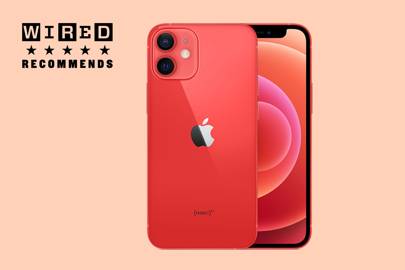

Screen: 6.1in 2532 x 1170 OLED | Processor: A14 Bionic | Battery: 2815mAh | Camera: 12MP ultra-wide, 12MP wide | OS: iOS 14 | Weight: 162g | Charging: 20W
As with many of the iPhone’s year-on-year upgrades, the basic software experience won’t change massively but, for the latest iPhone series, Apple has shaken up its charging and design along with better-than-ever display tech and camera features. The iPhone 12 (£789) is the best phone you can buy right now.
The first thing you’ll notice about the iPhone 12 is its fresh design. Apple recently redesigned its iPad Pro to harken back to the earlier days of iPhone – when an altogether squarer industrial design was its norm. The results were stellar, making the iPad Pro the best-looking tablet around – the same now goes for the iPhone 12. In a smartphone market where curved edges have taken over, Apple has managed to truly stand out.
Apple has brought the fire in the performance department too – and that is not a joke about it getting warm, as it certainly does not. Much like its stellar fanless M1 chip-sporting MacBook Air, the iPhone 12 and its A14 Bionic run like a dream and it all seems rather effortless. We found some Android flagships on this list – like the Samsung Galaxy S21 – would regularly get a tad warm under load, but the new iPhone 12 rarely breaks a sweat.
Some may be disappointed that this smooth performance philosophy has not extended to the screen’s refresh rate just yet – with Apple sticking to 60Hz when many top Android rivals have surpassed this for two years now. However, the bumping up of the regular iPhone model to a terrific OLED display this year has a significant effect in its own right – bringing brighter colours and darker blacks.
The iPhone 12 offers Apple’s typically strong point-and-shoot capabilities. While telephoto has been ditched for an ultra-wide lens on this year’s dual sensor setup, which may disappoint some, the results are improved – bringing additional low-light capabilities and added detail. The avid photographer may want to look to the iPhone 12 Pro Max (below), or to the Samsung Galaxy S21 Ultra and Oppo Find X2 Pro, to get a boundary-pushing camera hardware experience.
The iPhone 12 gets our pick for the best phone around as it masterfully combines three key elements where most flagship manufacturers only manage to nail one or two – simplicity, premium design and a useful range of features. This year’s iPhone is somewhat of an amalgam of two impressive Android performers – the Galaxy S21 series and the Google Pixel 5. Samsung offers some of the best design on the market and lots of horsepower while the Pixel 5 provides an easy-to-use experience with a suite of fruitful features. The iPhone 12 gets all of these right. Oh, and, there’s MagSafe too.
Also consider: You’ll find the iPhone 12 Pro Max a little later on this list, if you’re looking for a best-in-class camera experience, but – for those who like the sound of the iPhone 12 but want some added finesse – there’s the iPhone 12 Pro (£999). With this year’s Pro model, you get the triple-lens setup as well as a LiDAR camera for improved depth capabilities. The base storage is also up from 64GB to 128GB for that added bit of room for all your apps and photos.
Pros: A stunning design; great OLED display; nippy performance; boosted camera
Cons: No high refresh rate
Price: £789 | Check price on Apple | Amazon | Argos
Samsung Galaxy S21 Ultra
WIRED’s top Android phone pick for 2021
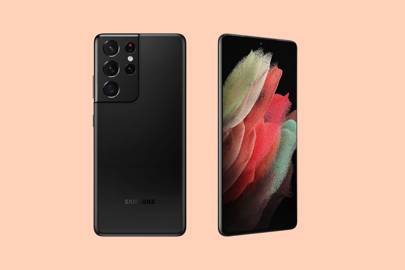

Screen: 6.8in 3200 x 1440 Dynamic AMOLED | Processor: Exynos 2100 | Battery: 5000mAh | Camera: 12MP ultra-wide, 108MP wide, 2x 10MP telephoto | OS: Android 11 | Weight: 227g | Charging: 30W
The Samsung Galaxy S21 Ultra (£1,149) is far from being one of the cheapest phones you can buy, comfortably surpassing the £1,000 mark. However, for your cash, you get almost every feature you could ask for on an Android phone – and it looks great too.
As with the iPhone, the most noticeable change for the S21 range this year is the design. Samsung has aimed to more intricately and stylishly weave its rather sizable camera bumps into the side of the phone and it mostly succeeds. You still won’t be able to ignore the beefy camera modules but, visually, they have gone from eyesore to a sleek part of the overall aesthetic.
Like the design, the display is stunning. Samsung has high standards when it comes to eye-catching displays and the S21 Ultra is a knockout. Along with a crisp and vibrant 1440p OLED panel, that can reach a peak brightness of 1500 nits, the S21 Ultra lets you use all of that pleasing resolution in tandem with a high refresh rate. Previously, Galaxy flagships required you to make a choice between the two, but now you can take full advantage of the delightfully smooth 120Hz at full resolution.
Samsung makes full use of the four cameras onboard the S21 Ultra. The ultra-wide is best-in-class while the 108MP lens provided remarkable levels of detail. The zoom lenses are impressively competent when you just can’t get any closer, avoiding blur and providing images that are more than just usable.
The Galaxy S21 Ultra is a truly impressive phone but, in some cases, it opts for the lavish over a more well-rounded experience. The Exynos 2100 chip provides its strongest offering against its Snapdragon equivalent, with impressive performance and solving battery drain issues. However, the phone’s battery life is still a bit behind the times, especially compared to the iPhone 12 Pro Max. The lack of a charger also leaves a bit of a sour taste in the mouth: the environmental benefits are clear, however, the Galaxy S21 Ultra supports 45W chargers – which many won’t have lying around – and Samsung’s 45W accessory will cost you an additional £45.
Pros: Quad camera setup is an impressive package; S-Pen support; ultra-premium design
Cons: No charger; battery life is lacking
Price: £1,149 | Check price on Amazon | Samsung | John Lewis
Apple iPhone 12 Pro Max
A superb camera system on a big iPhone
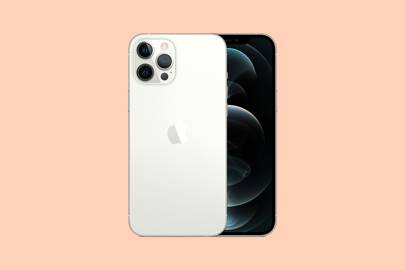

Screen: 6.7in 2778 x 1284 OLED | Processor: A14 Bionic | Battery: 3678mAh | Camera: 12MP ultra-wide, 12MP wide, 12MP telephoto, LiDAR | OS: iOS 14 | Weight: 226g | Charging: 20W
If you want the kitchen sink of Apple smartphones, the iPhone 12 Pro Max (£1,099) is the one to buy. While big phone opponents will have to steer clear of this one, those willing to handle this nigh-on iPad Mini will be rewarded with stunning design, camera features and rapid performance.
The whole iPhone 12 range reverted back to a more industrial design for 2020, returning to the style of the iPhone 4 and iPhone 5. However, the new look is far from retro – instead, it stands out amongst curved glass sandwich Androids. Its large size may not be for everyone but the 6.7-inch display does allow for remarkable visuals. iPhones often lag behind competitors when it comes to display specs but it’s always impressive how Apple manages to squeeze every ounce of colour from its panels. The size of the OLED display makes this one of the best phones around for gaming and watching videos as well as reading articles and ebooks.
While the display is unquestionably brilliant, those who opted for the Max over the regular Pro will have likely come for the boosted camera capabilities, including a 5x optical zoom, 12x digital zoom and sensor shift optical image stabilisation – all up from what you’ll get on the iPhone 12 Pro.
In real terms, this means the iPhone 12 Pro Max is the best all-round camera phone you can buy. Along with a focus on providing strong colour accuracy, the low-light performance of this camera is remarkable – offering an impressive level of detail, even in challenging situations. It isn’t all flash that makes this camera combo stand out though, the simplicity and easy-to-use software really enhances the experience – not spamming you with features as some Android rivals do. It is so easy to jump between modes to get the shot you want.
For video, you can crank this phone up to 4K 60fps should you so choose as well as taking advantage of HDR video recording with Dolby Vision. The sensor-shift stabilisation is truly stunning, enabling any tripod-less amateur video to get some cracking action-packed clips without much need to worry about keeping your phone still.
The camera isn’t perfect, however, with its ultra-wide camera not up to the standards of Samsung, OnePlus and other top-end Android flagships. Nevertheless, the overall experience makes it the best camera phone you can buy.
Another reason to opt for this Apple behemoth over the regular iPhone 12 Pro or iPhone 12 is battery life. You might think the need to power the iPhone 12 Pro Max’s large and vibrant display would damage this phone’s battery capabilities but that couldn’t be further from the truth. Those who’ve lived in a smartphone world where a day’s battery life has been the norm for several years will be refreshed by this phone’s offering – lasting well into a second day on any given day. Power users who can sap a normal flagship’s battery before elevenses are barely over will be able to push this phone to last a full working day.
The abilities of the iPhone 12 Pro Max’s camera alongside remarkable battery life and a stunning display almost make this the best money-is-no-object phone you can buy right now. It just misses the mark for the big phone averse, with the Galaxy S21 Ultra being a titan in its own right but remaining slightly more manageable in the hand.
Pros: Gorgeous display; speedy performance; the best phone camera around; amazing battery life
Cons: The very large form factor won’t suit everyone
Price: £1,099 | Check price on Apple | Amazon | Argos
Samsung Galaxy S21
The best iPhone 12 alternative under £800
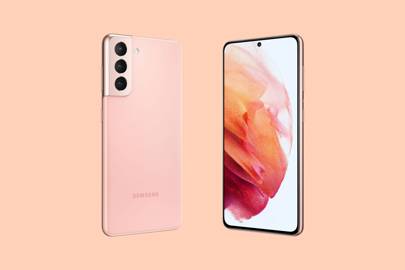

Screen: 6.2in 2400 x 1080 AMOLED | Processor: Exynos 2100 | Battery: 4000mAh | Camera: 12MP, 64MP telephoto, 12MP ultrawide | OS: Android 11 | Weight: 169g | Charging: 25W wired, 15W wireless
The new Galaxy S21 (£736) marks a shift in Samsung’s thinking for how it positions its flagship phone. The new S21 is closer to the paired back Galaxy S20 FE of last year rather than its predecessor – but, ultimately, that’s no bad thing.
While the front of the Samsung Galaxy S21 looks much the same as last year, the 2021 Galaxy S range has had one of its more significant shake-ups around the back. Samsung led the way in the curved glass-sandwich trend, leading to many Android devices having a similar look. With the S21, you now get a “glasstic” back – which does basically feel like plastic – along with a camera module design that gently merges into the side of the phone.
Some may baulk at the lack of a glass back when they are forking out upwards of £700 but, from not really damaging it in the looks department to doing a better job of batting away fingerprints, it’s not a bad thing. Samsung has also gone a tad more extravagant with the colours this year and, while they can look a bit garish on online images, our Phantom Violet model is eye-catching in all the right ways.
You won’t run into any performance hurdles with the Galaxy S21 either, tackling almost anything you can throw at Android with no sign of wavering. You can bounce around from social media app to watching videos and taking pics in a flash. While the performance speed is best-in-class, the software experience is still less clean and snappy than the likes of the iPhone 12 and Pixel 5.
Nevertheless, the apparent speed gets a further bump due to the 120Hz refresh rate of the display, making scrolling gloriously smooth. The AMOLED panel also brings a 2400 x 1080 resolution to the table, offering bright and crisp images across all your day-to-day apps and videos that look extremely vivid. The only performance-related hiccup you’ll notice on a regular basis is the rear of the phone getting a tad warm when you push this device a bit – it’s not concerning or uncomfortable but it is noticeable.
As a point and shoot phone, the Galaxy S21 does an amazing job – it will make the average user produce snaps far better than what you might expect. It really gets the basics right, even if Samsung’s signature saturated look still lingers so personal taste will be a factor here. Move up a layer of complexity and the results remain impressive, portrait mode accurately finds its subject – providing blurs and enhanced sharpness in all the right places – while night mode nails it too, upping the brightness and not losing too much detail.
Ultimately, it’s a camera experience that offers a tad more tinkering than the iPhone or simpler interfaces like the Pixel 5’s, if that’s your sort of thing. However, while providing good results, the camera upgrades this year are minimal – this, combined with some just okay new features like Single Take and a camera app UI that isn’t the most fluid, means it doesn’t offer a huge reason to upgrade.
The camera isn’t the only thing that will make owners of more recent Galaxy S and Note models less inclined to upgrade. The display, despite still being impressive, does have a reduced resolution from last year and the phone does feel less premium in the hand. Nevertheless, the shrewd phone buyer will appreciate some of the sacrifices the Galaxy S21 has made to offer a lower price and, in the performance and looks department, it more than holds up.
Pros: Impressive versatile camera; vivid 1080p display; reinvigorated design
Cons: Gets warm on back; some reduced features from S20
Price: £736 | Check price on Amazon | John Lewis | Samsung
Oppo Find X2 Pro
Best for fast charging
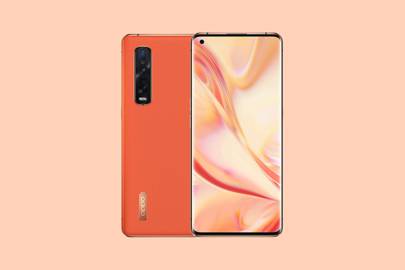

Screen: 6.7in 3168 x 1440 IPS LCD | Processor: Qualcomm Snapdragon 865 | Battery: 4260mAh | Camera: 48MP, 13MP zoom, 48MP wide | OS: Android 10 | Weight: 200g | Charging: 65W
The Oppo Find X2 Pro (£950) is one of the boldest phones of the year: a £1,000-plus mobile from a name many in the UK do not know. However, just an hour with it is enough to demonstrate Oppo’s experience. It has made phones since 2012.
A slightly unusual appearance is one of the draws here. The Oppo Find X2 Pro is available in bold orange vegan leather. It has the supple feel of real leather, and the grippier surface it provides. Plus there’s cruelty guilt to think about unless you go deep and start thinking about rare earth elements.
The Find X2 Pro is also available in an extra-hard ceramic gloss black if orange seems a leap too far down the colour chart.
It is built to compete with the very best from Huawei and Samsung, and nowadays only Samsung seems a serious rival if you value Google apps. The Find X2 Pro has 5G, the top-end Qualcomm Snapdragon 865 CPU and a superb 120Hz OLED screen.
Oppo does use larger batteries in some of its cheaper phones. This one has 4260mAh capacity, but it reliably lasts a day and change, and the 65W charger makes a significant top-up in just a few minutes. It is currently the most powerful charger included with a phone.
Is it worth buying over the Galaxy S20 Ultra? The Oppo has much greater storage and its processor is significantly better than the Exynos chipset used in the UK version of the Samsung. However, the S20 Ultra has the edge for photography.
While the Find X2 Pro has a great 5x periscope zoom, an excellent 48MP primary camera and a good ultra-wide with macro-friendly autofocus, the S20 Ultra is better still for low-light images and extended zoom shots.
Pros: A design that stands out; high-end performance and 5G; strong camera combo
Cons: Not our first pick for low light shots
Price: £950 | Check price on Amazon | BT | Oppo
OnePlus 8 Pro
An alternative oversized Android
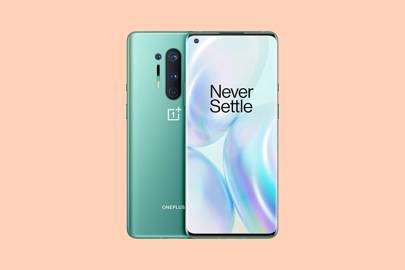

Screen: 6.78in 3168 x 1440 AMOLED | Processor: Qualcomm Snapdragon 865 | Battery: 4510mAh | Camera: 48MP wide, 8MP telephoto, 48MP ultrawide, 5MP colour filter | OS: Android 10 | Weight: 199g | Charging: 30W
Some criticised the OnePlus 8 Pro (£699) for being expensive. It is the priciest OnePlus phone to date, £100 more than the OnePlus 7T Pro released just six months earlier. However, viewed alongside £1,000-plus phones from Apple, Samsung and Oppo, it’s much easier to appreciate the great value OnePlus still offers.
This phone has an excellent 120Hz screen, a top-tier Snapdragon 865 processor and a lovely curved glass design in glossy black (128GB) or matte blue (256GB).
Its upgrades also justify the £100 added cost this year. The 8-series is the first family of OnePlus phones to have 5G across the range, and the Pro model has an upgraded camera. Its main sensor can take true flagship-worth images. The ultra-wide moonlights as a great macro photographer too.
Only the zoom camera is clearly weaker than that of other top-performing Androids. It has a “3x” zoom, but this involves a less-than-3x lens and an 8MP crop of a 12MP sensor. OnePlus fits a lot into the budget, but not a great zoom. It did still find the change to afford an unusual colour filter camera, which takes bizarre-looking sepia-toned images.
Pros: Gorgeous display; the best OnePlus camera yet; fast Snapdragon 865
Cons: Needless colour filter camera; not cheap
Price: £699 | Check price on Amazon | OnePlus | John Lewis
Apple iPhone 12 Mini
The finest small phone you can buy right now
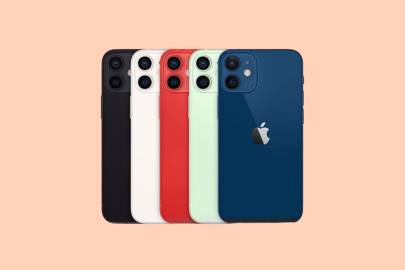

Screen: 5.4in 2340 x 1440 OLED | Processor: A14 Bionic | Battery: 2227mAh | Camera: 12MP ultra-wide, 12MP wide | OS: iOS 14 | Weight: 133g | Charging: 20W
As phones have gone supersized, from the budget to the ultra-premium, many have cried out for a quality phone that’s of a more manageable size. In the end, it was Apple who duly obliged, releasing the iPhone 12 Mini (£679). Apple was already leading in this space, rebooting its older and smaller phones in the form of the iPhone SE series. But, the iPhone 12 is a different proposition, bringing the latest in Apple’s sleek design and up-to-date features too.
And the iPhone 12 Mini does live up to all it promises – a miniature flagship phone. From camera and design to performance, you’ll get the same experience here as you do from the regular iPhone 12. Despite its small size, the almost edge-to-edge display means Apple has managed to squeeze a more than reasonably sized 5.4-inch panel. That’s more than enough for almost all but the big phone aficionados – who, obviously, won’t be interested in this device.
The resolution of the panel is slightly reduced from the regular iPhone 12, and the reason for the quality drop isn’t immediately obvious. However, one of our main qualms with Apple’s mini phone is the battery – requiring you to charge the phone during the day, even with average use. Battery life certainly appears to be the fall guy for the sake of packing flagship features like the A14 Bionic chip and 5G into such a small package.
Overall, this phone is a godsend for those who have missed small phones. You may feel slighted by less than stellar battery life but this will mostly melt away when using the phone. iPhone flagship quality snaps, performance and design all make this mini phone an impressive achievement.
Pros: Refreshingly small size; performance and design matches flagship iPhone 12
Cons: Disappointing battery life
Price: £679 | Check price on Amazon | Apple | Argos
Realme X50 5G
The best budget phone you can buy right now
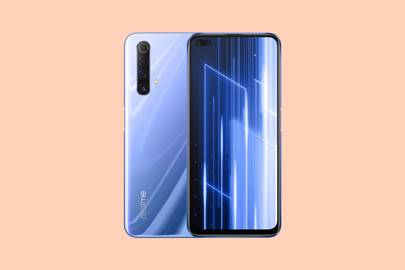

Screen: 6.57in 2400 x 1080 LCD | Processor: Qualcomm Snapdragon 765G | Battery: 4200mAh | Camera: 48MP, 8MP ultra-wide, 2MP macro, B&W Portrait Lens | OS: Android 10 | Weight: 202g | Charging: 30W
Realme has been one of the smartphone manufacturers to watch in the last couple of years and the X50 5G (£239) is the jewel in its crown. It isn’t the most premium phone the company offers, but it’s the combination of value and features that make this phone stand out.
At time of release, the selling point of the Realme X50 5G was bringing 5G capabilities down to a phone priced at under £300 – being one of the first to do so. While that was fine and dandy, what really made the X50 5G stand out was its all-round capabilities, managing to not sacrifice the rest of the phone to be able to cram in 5G at a low price.
The combination of a 120Hz Full HD display and Snapdragon 765G make for a day-to-day experience that isn’t far below flagship Android phones at twice, or even three times, the price. You can swiftly move from app to app and even get strong performance in mobile games like PUBG Mobile and Call of Duty Mobile. The Full HD display is not the punchiest around but the decent resolution and smoothness that comes from the high refresh rate make browsing around on this budget phone a surprising delight.
For a long while, it’s been hard to recommend budget phones for those who like to regularly take photos – with them often sporting needless extra lenses and sub-par main shooters. However, the X50 5G is a capable photo-taker. You won’t get bags of features like higher-priced devices but you also won’t be disappointed with the results.
The Realme X50 5G also manages to maintain one of the usual benefits of getting a lower-priced, and often thicker, phone – that being strong battery life. You can stretch the X50 5G to almost two days with light use and it comfortably gets you through one day in almost any scenario. Some budget phone fans may be sad to see no headphone jack on this device but there are so many other benefits onboard – you even get a glass back when many at this price are forced to go plastic.
Pros: Strong battery life; decent photos; 5G; Full HD 120Hz display
Cons: Lack of headphone jack
Price: £239 | Check price on Amazon | Realme
Google Pixel 5
A fine mid-range phone
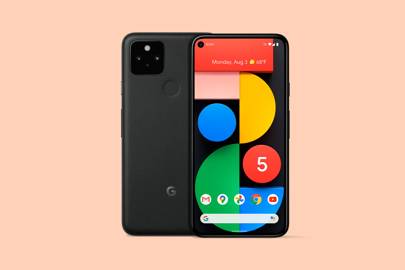

Screen: 6.0in 2340 x 1440 OLED | Processor: Snapdragon 765G | Battery: 4000mAh | Camera: 12.2MP main, 16MP ultrawide | OS: Android 11 | Weight: 151g | Charging: 18W wired, 12W wireless
Let’s be honest, the Pixel 4 wasn’t Google at its best. The Pixel 2 was revered and the Pixel 3 had plenty good to say about it too – however, a phone hamstrung by power battery life and some superfluous features followed. The Pixel 5 (£599) aims to correct these mistakes by paring things back.
If you’re considering a Pixel then you’re likely here to hear about its camera chops – having received praise for several years even on its cheaper devices like the Pixel 4a (below). With the Pixel 5, Google has finally taken the plunge and doubled up the lenses. Despite the added lens, there’s much the same to say about this Pixel’s camera abilities as year’s past – it’s remarkably easy-to-use while its colour accuracy and level of detail is premium flagship standard. In truth, the ultra-wide camera is a tad disappointing given Google’s camera prowess, falling well below the standard of the iPhone 12, S21 Ultra and OnePlus 8 Pro. Still, it does an amazing job at the basics.
The software experience is another recurring feather in the Pixel range’s cap and it mostly returns here. The interface remains delightfully simple. The Google-averse might feel a bit overwhelmed by the focus on its own apps like Docs, Sheets, Drive and more but their appearance won’t surprise anyone picking up this Google flagship phone.
While the performance is generally speedy, the Snapdragon 765G isn’t up to what you get from last year’s Snapdragon 865 or this year’s new 888 and Apple A14 Bionic. The average user won’t be perturbed by milliseconds added to app loading times but those tempted by a phone that’s cheaper than Samsung and Apple’s latest flagships may want to reconsider if they are still hoping for premium flagship performance.
Like the Pixel’s photo-taking, the display favours accuracy over much else. The lifelike colour of this 90Hz FHD+ OLED is quite impressive and, ultimately, refreshing compared to Samsung and OnePlus flagships which can feel like they opt for eye-catching over accurate imagery. The Pixel 5 display does flatter to deceive when it comes to brightness – you might struggle to view this display in direct or, even, middling levels of sunlight – a problem that’s a thing of the past for the iPhone 12, Galaxy S21 series and other Android flaghips.
Sure the Pixel 5 doesn’t match an iPhone 12 or Samsung Galaxy S21. What it does feel like, though, is a phone that provides a safe haven from higher flagship prices – whether it’s budget phone fans looking to step up or premium phone owners who don’t want to shell out top dollar again. Admittedly, a reduction in flagship prices in early 2021 has hurt the case for a Pixel 5. However, a more manageable size and top performing camera might still be enough to grab plenty of attention.
Pros: Great for one-handed use; easy-to-use camera with stunning results; a breezy OS experience
Cons: Price runs close to more premium rivals; sub-flagship performance
Price: £599 | Check price on Amazon | Currys | Google
Apple iPhone SE 2020
Our pick for a budget small phone
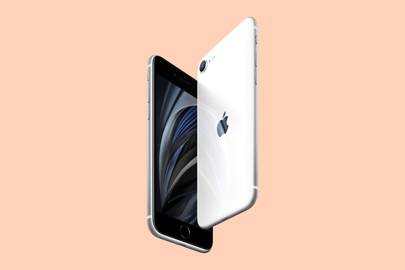

Screen: 4.7in 1334 x 750 IPS LCD | Processor: A13 Bionic | Battery: 1821mAh | Camera: 12MP | OS: iOS | Weight: 148g | Charging: 5W, supports 18W
Apple’s smaller iPhone is back. One of the specs of this phone sounds copy-pasted from five years ago. A 4.7-inch screen phone released in 2020? That’s right.
The iPhone SE 2020 (£394) is a small-screen phone with a 16:9 aspect ratio, a shape you no longer see in Androids. It makes the phone look dated, but the display size is larger than you might guess, with a width similar to a 5.5-6-inch Android. Anyone suggesting you can’t comfortably play games or watch YouTube videos at this size has not tried an iPhone SE.
Other parts of the phone are excellent at the price. The iPhone SE is no less well-made than the iPhone 11, with aluminium sides and glass panels on front and back.
Its camera is excellent too. The iPhone SE has just one 12-megapixel sensor on the rear, but as it shares its hardware with the other 2020 iPhones, image quality is excellent across the board. Google’s Pixel 3a and 3a XL are the only obvious phones that can compete with it for low-light image quality at this level. And both of those Androids are plastic.
The iPhone SE’s power can only be underestimated too, as it has the same Apple A13 Bionic SoC as the iPhone 11 Pro Max. This phone may look like it belongs in 2015, but it will stay fresh in other respects for years.
It is also a reminder of how great the Touch ID sensor was. And is. This fingerprint scanner, the precursor to Apple’s face unlock, has a lovely haptic click and works every time.
You can argue the iPhone SE is for people who don’t care much about the tech inside, but it’s also a surprisingly good buy for those who do. There’s one other weakness: the iPhone SE battery life is not as good as the iPhone 11’s.
Pros: Speedy performance; timeless Apple design; great camera
Cons: Battery life isn’t great
Price: £394 | Check price on Amazon | Apple | Argos
Google Pixel 4a
Photography on a budget
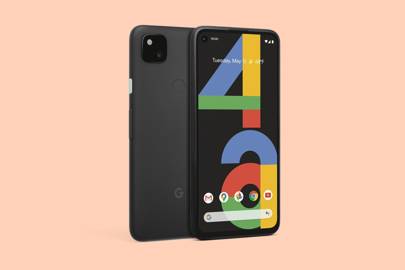

Screen: 5.8in 2340 x 1080 OLED | Processor: Qualcomm Snapdragon 730G | Battery: 3140mAh | Camera: 12MP | OS: Android 11 | Weight: 143g | Charging: 18W
The Pixel 4 was Google phones at their worst – a high price and smatterings of iPhone mimicry that just didn’t deliver. Thankfully, Google drew on the excellent Pixel 3a for its next phone. Google Pixel 4a (£349) is a budget phone that absolutely nails a fluid software experience while offering remarkable photography performance for this low price.
The first thing you’ll notice about the Pixel 4a is that it isn’t as imposing as many current phones, it isn’t as miniature as smaller iPhones like the SE and 12 mini but it’ll still be a refreshing change for many. The budget market is rife with phones that seem to compensate for their lesser features by slapping on a huge display. Instead, the Pixel 4a is smaller but still a decent 5.8-inches and its extremely crisp, using OLED tech and offering Full HD resolution.
Above all, the Pixel 4a is the budget phone to consider if you’re a frequent picture taker. Google’s honing of its camera software means it can achieve stunning results with just one lens. The 12.2MP camera offers both electrical image stabilisation (EIS) and optical image stabilisation (OIS) as well as phase detection autofocus. While these features are handy for a speedy point-and-shoot experience, the quality of the images speaks for itself too – providing detailed and vibrant snaps.
The no-frills approach to the camera extends to the rest of the device too but, for some, it may not be for the best. The basic design is refreshing and certainly won’t offend anyone but the plastic finish is a tad underwhelming. Then, there’s a lack of certain features like wireless charging, an IP rating for waterproofing and the ditching of the Pixel 4’s motion-sensing tech – maybe that last one is for the best.
At a price below £350, the Pixel 4a is an easy budget recommendation for users who care about their photos but don’t want to spend the earth. If you want more in terms of features, you’ll have to stump up for the Google Pixel 5 or look to other brands.
Pros: Amazing camera for the price; streamlined Google experience; comfortable to hold
Cons: Missing some modern features
Price: £349 | Check price on Currys | Google | Argos
Sony Xperia 1 ii
A neat Android phone with a headphone jack
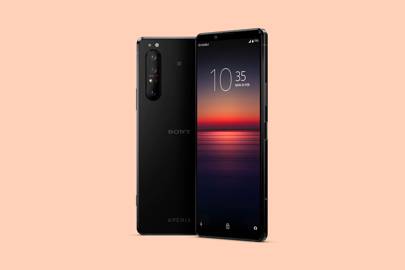

Screen: 6.5in 3840 x 1644 OLED | Processor: Qualcomm Snapdragon 865 | Battery: 4000mAh | Camera: 12MP ultra-wide, 12MP wide, 12MP telephoto | OS: Android 10 | Weight: 181g | Charging: 21W
While the popularity of its phones may have waned, Sony continues to offer an alternative to the rest of the market. The Sony Xperia 1 ii (£899) is a rarity in that it sports a 4K display and it’s also a flagship that retains a headphones jack – intriguing features for some but the rest is a mixed bag.
The look of the Xperia 1 ii isn’t one that’ll wow many, sticking to a rounded, long and thin design that Sony’s phones have offered for some time. Nevertheless, it does feel premium – with its metal edges and glass back. Unlike with the design, your eyes will get a treat when you turn on the display. The Xperia 1 ii has a 4K 21:9 display, making this one of the best phones around for watching movies in all their detailed and immersive cinematic glory. However, the lack of a higher refresh rate and black bars you’ll get on either side for regular videos make irk some.
If the display of this phone doesn’t pique your interest then the camera might win you over. Sony has brought plenty of its camera experience down to this phone. The triple camera setup combines with a time-of-flight sensor to provide a photography experience that is speedy, accurate, and truly impressive for recording video. Sony camera fans will recognise the camera app, which is reminiscent of what you’ll find on an Alpha camera and, as such, it brings a ton of features for camera aficionados to tinker with.
There’s plenty to like about the Xperia 1 ii but it does become a harder sell when you put it up against flagship rivals – lacking several modern features, like a 90Hz display and a Night Mode, and lagging behind in design. The high starting price – £1,099 – of the Sony flagship only adds to this burden.
Pros: Stunning 4K display; decent battery life; range of camera features
Cons: Unimaginative design; low refresh rate, no Night Mode
Price: £899 | Check price on Amazon | Currys | AO